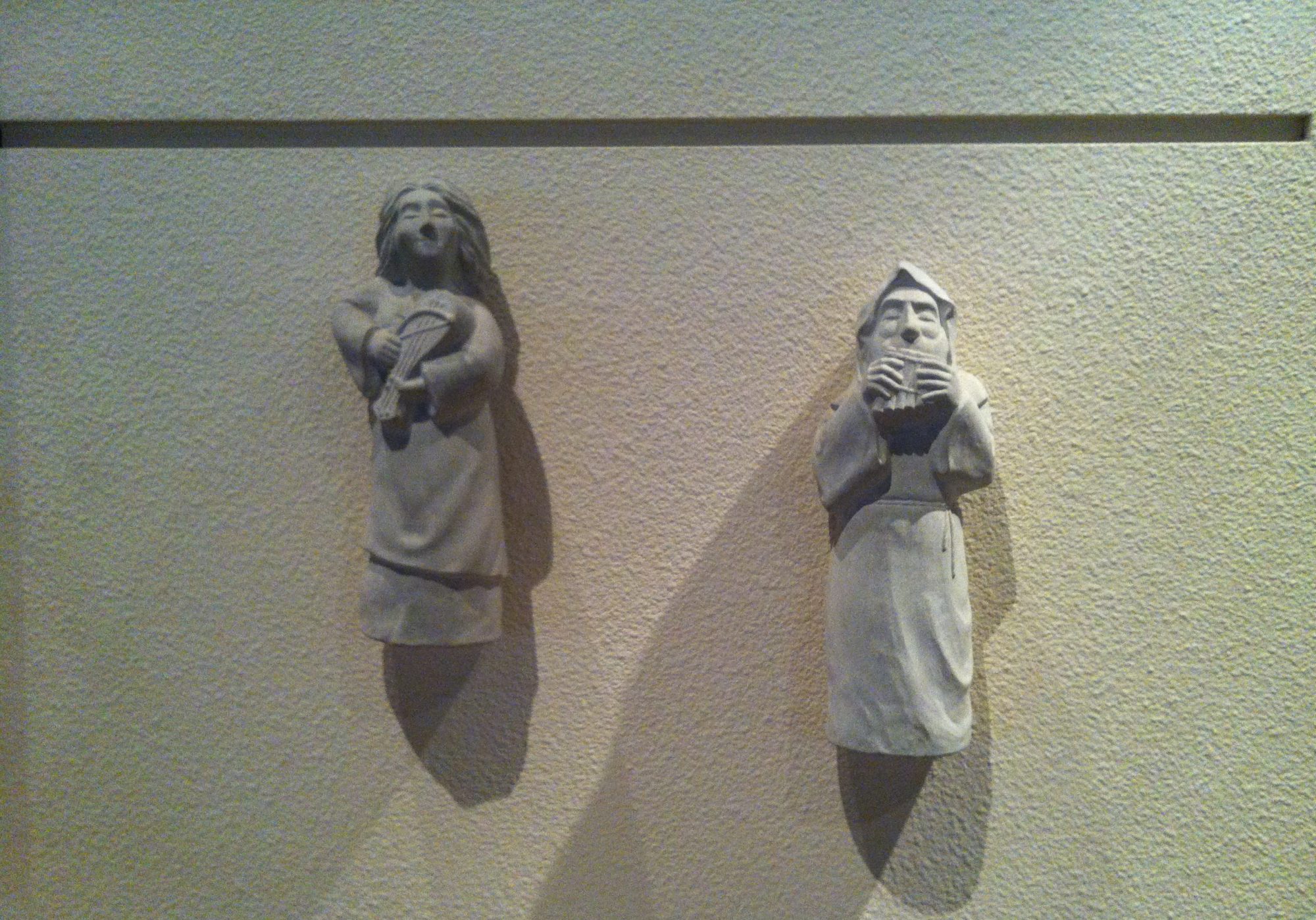 In 2012, Emily was commissioned to write Mass 101: Liturgy and Life for Liguori Publications, and in 2013 the book was published to excellent reviews (see below). The book seeks to help life-long Catholics or those who are new to the faith get more out of the experience of Mass through understanding its history, meaning, structure and significance. The book focuses on the Paschal Mystery as central to Catholic liturgy, and its clear expression in worship as formative to the lives we lead “after Mass”. It is available in most places where Catholic books are sold, and in many places online, especially through the publisher’s website.
In 2012, Emily was commissioned to write Mass 101: Liturgy and Life for Liguori Publications, and in 2013 the book was published to excellent reviews (see below). The book seeks to help life-long Catholics or those who are new to the faith get more out of the experience of Mass through understanding its history, meaning, structure and significance. The book focuses on the Paschal Mystery as central to Catholic liturgy, and its clear expression in worship as formative to the lives we lead “after Mass”. It is available in most places where Catholic books are sold, and in many places online, especially through the publisher’s website.
Emily has also authored Your Baby’s Baptism (and the accompanying sacramental Leader guide) a handbook on infant baptism aimed at parents and godparents. It is also available through Liguori’s website.
Reviews for Mass 101: Liturgy and Life:
Mitch Finley for Catholic News Service
New books offer valuable guidance in understanding the Mass
“Mass 101 is a first-rate book on the Mass, one written in language that is both theological and accessible to most adult readers. The author, Emily Strand, is a former campus minister and teacher at the University of Dayton who is now a full-time mother and member of the Worship Commission for the Archdiocese of Cincinnati.
“In her Introduction, Strand declares: “Perhaps the most valuable notion about the Mass to take away from this volume is an idea of its profundity — its endless wealth of significance that no one book has or will ever capture.” To that end, following the first chapter titled “Why Learn About the Mass?” Strand offers gripping discussions of the history of the Mass and what Vatican II taught about the Mass.
“In a section titled “The Paschal Mystery and the Ministers of the Mass,” Strand makes it clear that while the priest “has the principal role” in the Mass, he isn’t the only “minister.” She explains the roles of others including the ministers of music, lectors, extraordinary ministers of holy Communion, servers, ushers and others. Thus, Strand illustrates the important fact that not only the priest, but the entire assembly, celebrates the Mass.
“The remaining four chapters examine the parts of the Mass, “unpacking” the meaning and purpose of each. More than a few readers may be particularly interested in the appendix, “The Third Edition of the Roman Missal and the New Translation of the Mass.” Here Strand explains extraordinarily well the new translation of the Mass prayers that English-speaking Catholics began using a couple of years ago.
“Mass 101 is clearly written, informative, and complete. It’s the best book on the Mass for Catholic readers this reviewer has come across in quite a while.”
Fr. J. Michael Joncas’ review of Mass 101:
“It takes a special kind of genius to research and understand first-rate scholarly insights on a particular topic and then to translate those insights into images and language accessible to non-specialists. In “Mass 101: Liturgy and Life” Emily Strand gathers material from systematic theologians, liturgical historians and pastoral practitioners to synthesize a panoramic view of present-day Roman Rite Eucharistic worship. After an introductory chapter encouraging study of the Mass as a way to deepen one’s engagement, the author offers a tour-de-force overview of the historical development of the Roman Rite Mass’ texts and ceremonies from its Jewish roots to the eve of Vatican II (in 23 pages!) and a rich chapter on liturgical spirituality grounded in and exploring the “paschal mystery.” The following four chapters explore in some detail each of the major divisions of the Ordinary Form of Roman Rite Eucharist: the Introductory Rites (“On the Threshold”), the Liturgy of the Word (“The Table is Spread”), the Liturgy of the Eucharist (“The Mystery Meaning You”) and the Concluding Rite (“Liturgy and Life”). Each chapter presents historical, theological and functional insights into the structural elements of the parts of the Mass with a view toward enriching the participants’ liturgical spirituality. It is here that the author’s ability to “keep seeing the forest” rather than stopping to examine each tree provides the greatest benefits.
“I think “Mass 101” could be read with benefit by university students, adults in faith formation programs, catechumens and seminarians. It could easily serve as a common resource for members of a parish liturgy committee, lectors, cantors, acolytes, and extraordinary ministers of holy communion. With proper permission, excerpts from the book could form a fine series of bulletin articles. It could also serve as a good introduction to more detailed studies of the Mass.”
Bernadette Gasslein, editor of Worship‘s review of Mass 101:
“In Mass 101: liturgy and life, Emily Strand has seamlessly woven together history, theology, rubrics, meaning, and pastoral wisdom about the Eucharistic celebration, each complementing the other. For years she helped university students understand the rich tapestry that is the liturgical life of the church. Emily knows the questions people ask, and now parish catechists, RCIA leaders, youth ministers, musicians and pastors can learn, not only from the content of the book, but also from the way this master catechist answers the questions.”
Have you read Mass 101? Leave your review in the comments!
